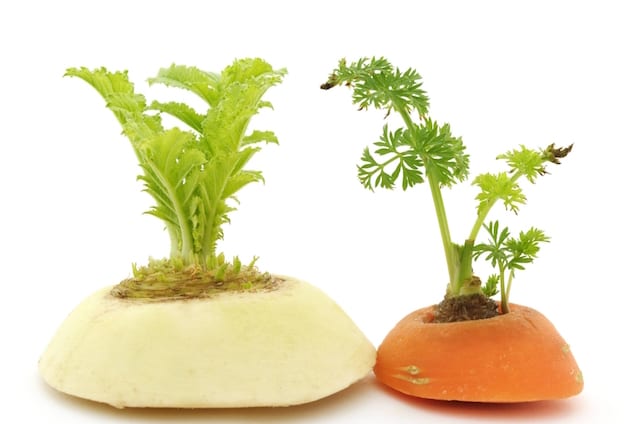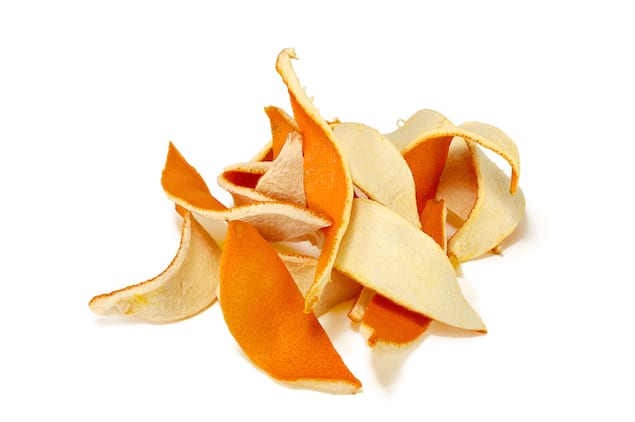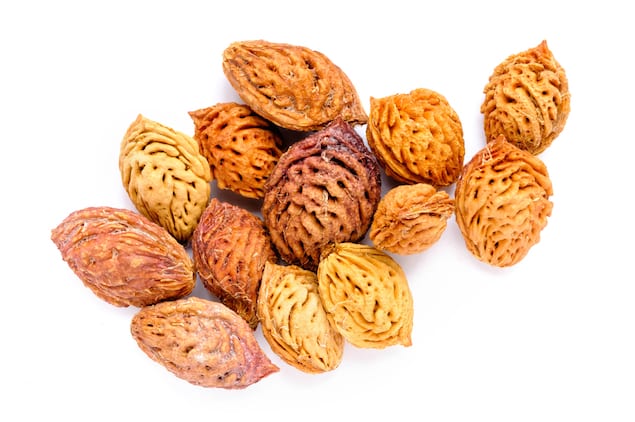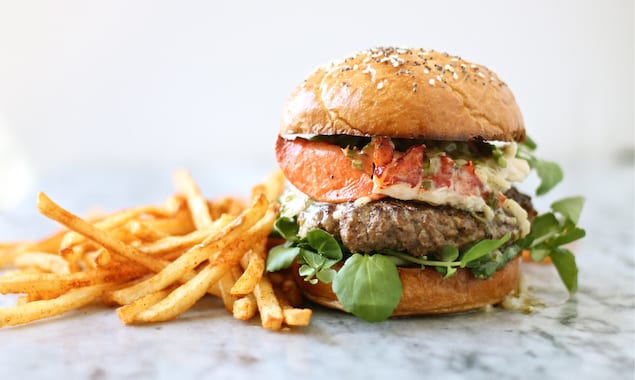Mandatory family outings to the Detroit farmers' market and nightly…
Celebrate Earth Day and save a few cents by rescuing commonly tossed food items for another purpose.
By Annelise McAuliffe
In professional kitchens, little is left to wither or waste, but when cooking at home, it can be difficult to come up with practical uses for leftover food. By-products of cooking, food scraps and produce that is past its prime still have purposes before they are thrown in the dump. Here are some food items that we usually have floating around our home kitchens and how to use them. Many of these items can easily be composted to create nutrient rich soil. Find basic composting tips here to get started. Celebrate Earth Day and save a few cents by rescuing commonly tossed food items for a higher purpose.
BACON FAT
The next time you make bacon in the oven, cook the strips over a rack to allow the grease to drip down and give you a crispy slice. Whether on the stove or in the oven, save the leftover fat in a jar in the fridge. Be sure to strain the fat of any particles before saving. The leftover drippings can be used as a fat with tons of flavor in just about any recipe. Bacon fat biscuits? Bacon fat potatoes? Wilted bacon fat greens? Yum! Plus, the fat can also be used to coat and season your cast iron skillets.
 Shutterstock: TAGSTOCK1
Shutterstock: TAGSTOCK1
VEGETABLE ENDS
Save the tops and ends of your cleaned vegetables to make a flavorful and inexpensive broth. Try this recipe for tips on creating a flavorful combination of vegetables. Don’t feel like ends have to be made into a a broth right away, bag and freeze until you have enough or the time to do so. Ends of green onions, an eye of a potato, pits of avocados, or the top of a pineapple can all be replants to grow more vegetables. Depending on what you are replanting, this can be super simple. Check out this guide for more tips.
STALE BREADS
Stale bread, crackers, and even cookies can be ground into breadcrumbs or a meal to use as a pie crust. Similarly, bread can be cubed and made into croutons or rehydrated and baked into a custard-y or savory bread pudding.
FISH and MEAT BONES
Fish bones, shrimp skins, and meat bones can be made into a rich stock as well. Some bones require roasting before they are used in a stock so check out a recipe first and combine them with your leftover vegetable ends. Check out this recipe for a flavorful broth.
 Shutterstock: astral232
Shutterstock: astral232
CITRUS ENDS or PEELS
Often a lemon is cut in half and the other segment sits in the fridge until it’s too dried out to use. The good think about citrus is, it is suitable for a life beyond cooking. Use it to clean tough areas like your stovetop or zap it in your microwave for a few seconds to get rid of any funky odors. Similarly, grind the leftovers in your garbage disposal for a refreshing scent. If the peel is still in good condition, it can be used to infuse waters or liquors, to garnish drinks, in a cup of tea, or zested with salt for a new homemade seasoning.
WATERMELON RINDS
Once summer comes around we can go through watermelon like crazy. Rather than ditching or composting the leftover rinds, try pickling it for a fun condiment to enjoy all year long. Try this recipe.
CORN COBS
Even after the kernels are eaten off, the cobs retain a ton of flavor and sugars. For a simple corn broth or corn “cream” simmer cobs in water and then use the liquid in soups, sauces, or even to make an interesting ice cream or sorbet. Try this recipe.
COFFEE GROUNDS
Coffee is a natural deodorizer. Have you every noticed a container of coffee beans in a perfume shop? They help to clear the nose of scents before smelling another bottle. Use the same philosophy with used grounds in your fridge to absorb any nasty odors, just be sure to change them often. Also, try using the grounds the next time you scour your sink to clean and remove smells all in one. Coffee grounds have been found to deter critters and bugs in the garden. Add some to the soil around plants that are being attacked.
 Shutterstock: Maxal Tamor
Shutterstock: Maxal Tamor
FRUIT PITS
Keep the pits of stone fruits and plant a tree! Ok, maybe that is a bit ambitious. For a more approachable way to reuse them, try making an ice cream. The kernel hidden inside the pits can be used to infuse your ice cream base or other dishes with a flavor that is similar to an almond or nut extract, except with the risk of allergy and for a cheaper price. Give these recipes a try.
CHEESE RINDS
Cheese rinds are edible, but most are not very appetizing. However, be sure to save them and stash in your freezer until you have enough to make a broth. Try this recipe. Or, use a few at a time to flavor a pot of soup or sauce, just be sure to remove before serving. Rinds could also be used to infuse oils, pasta, or a pot of rice or grains.
PICKLE JUICE
The leftover liquid in your empty jar of pickles should never be dumped, it is so versatile! A personal favorite is using it to create a fun tangy in savory cocktails. Perhaps the easiest way to repurpose the liquid to so simply throw in more things that you would like to become pickled. Add it to sauces or any recipe that calls for vinegar to enhance its flavor. Use it to brine or tenderize meat. Or, start ripping pickleback shots, responsibly of course.
Mandatory family outings to the Detroit farmers' market and nightly home-cooked meals cultivated Annelise's respect and curiosity for food. A graduate of The Culinary Institute of America, she spends her free time in New York City recipe testing, eating breakfast all day, and dreaming up international culinary adventures.





Great article! I actually got so much help with gardening from http://www.selacorp.com they can easily find a solution to every problem. They are really wonderful.